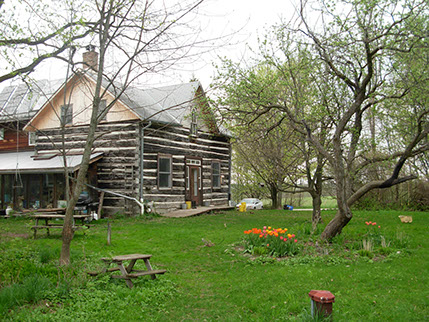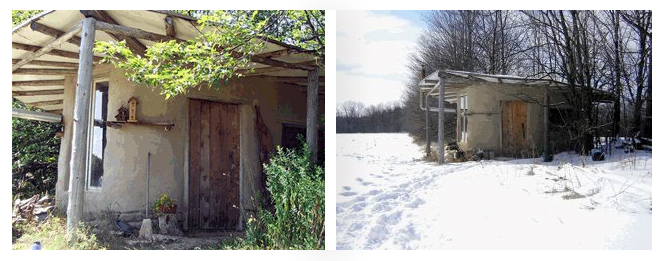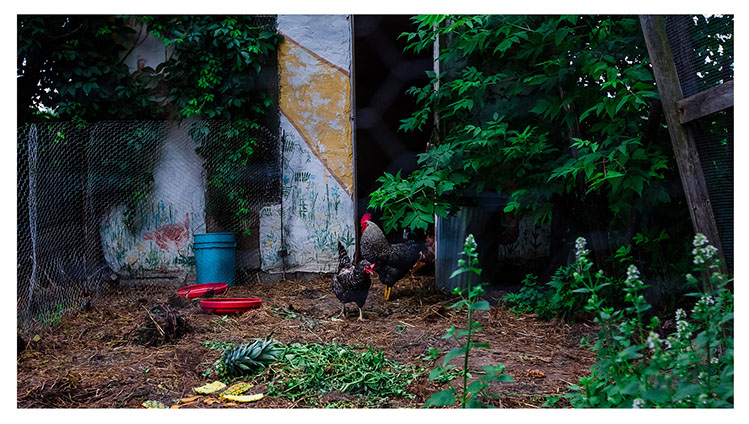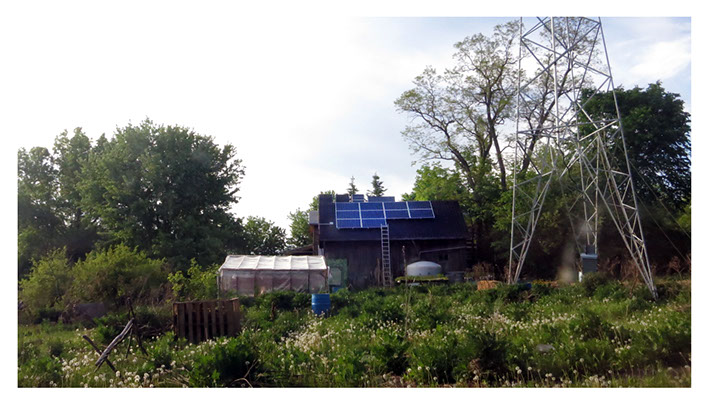At Russet House Farm we are concerned not only about sustainable living, but also about regenerative living in this place. While our farming and gardening practices embrace such regeneration, our buildings and outbuildings also seek to use materials that are local and renewable.
HEAT AND COOKING
Most of us are accustomed to multiple sources of heat in a home: stove, furnace or boiler, hot water tank, clothes dryer, hair dryer, toaster, even a hair straightener or curler. At the Russet House we have distilled all of our heating needs into one source. The house is primarily heated using a Wood Stanley Waterford cookstove. This wood-burning stove not only heats the house and provides both a cooktop and oven for our winter cooking needs, it also heats all of our hot water in the winter months. With a bread holder, the stove makes excellent toast, and drying racks at the top of the stairs ably hold our laundry while it dries in the dry winter air. When temperatures dip below -10 celsius, we also fire up a high-efficiency wood-stove in our library. Both stoves also heat a pan of water that functions as a humidifier in the winter months.
On sunny days in the summer, a solar oven is used for slow cooking, baking and roasting, reducing our reliance on the propane stove in the kitchen.

COB COTTAGE
The cob cottage was built over a period of four years. Cob, which is a mixture of clay and straw kneaded together, is an ancient building material, often called adobe. The thick walls of the cottage provide excellent insulation, keeping it cool in the summer and warm in the winter (with the help of the woodstove!). The roof is flat to accommodate a living roof of various grasses.
Photos of the building process can be found in the cottage, and an example of what the cob looks like before it is covered with plaster can be seen on the doorframe.
The cottage is used most frequently by members of the farm community as a study and as accommodation for retreats and guests. It has also been used as a honeymoon suite!

STRAWBALE BUILDING
The farm is home to two strawbale buildings. These buildings are constructed entirely of straw, with plaster exterior. One is home to the chickens and the other is home to the ducks. The thick walls in both structures ensure that the poultry are cool in the summer and warm in the winter.
Bales of straw make an ideal insulating and building material. The R-value for the wall in the chicken coop is 58. Strawbale walls are less expensive than conventional construction, make use of locally available straw, and have been shown to be up to twice as fire resistant as wood frame construction.
The bales are stacked like bricks, pegged together, wrapped with chicken wire and plastered with a cement, lime and sand mixture.
Strawbale walls can be structural and hold up the walls or they can be used as in-fill with post and beam type construction.

SOLAR POWER
Russet House Farm runs entirely from solar power. The farm is not connected to the electrical grid. Our 2.5kw system consists of 10 solar arrays on the roof that collect power that is then stored in large batteries in the basement. These batteries provide power for both the AC and DC systems in the house. In the original farmhouse, most of the lights run on direct current. The fridge and freezer also run on direct current; the fridge is specially made by a company in the United States called Sundanzer (www.sundanzer.com); the freezer is also made for solar applications by a company called Sun Frost (www.sunfrost.com). An inverter provides alternating current to the lights and outlets that need it. A back-up gas generator provides power when there is no sun for a prolonged period.

SUSTAINABLE FORESTS
The thirty five acres of forest on the farm consist of a large area of cedar and other evergreens, and a smaller area of mixed hardwoods (maple, birch, beech).
The forest is sustainably harvested for farm needs and firewood. Hiking trails wind their way through the woods, and native plants such as wild columbine, wild raspberry, trilliums, and dogtooth violet are abundant.
Sugar maple trees suitable for tapping are found in the hardwood section of the forest and wild apple trees suitable for cider are found throughout.
DIRECTIONS | CONTACT | TOMATO SALE |
